
Roy Thomas is a name that most who've spent any time climbing in South East Wales will know. Even if they've never met him, they'll most likely feel a familiarity borne from his name crowding guidebook route credits, Wikis and UKC entries, or popping up on their notifications as he posts another photo of a re-geared crag on Facebook. You might have spotted him at the crag, jugging a line, and packing a fresh new set of bolts. His first ascents, many christened with his trademark debauched sense of humour, litter the valleys and the cliffs of the Gower. The first route I ever climbed was a Roy Thomas number and so were most of the next few hundred.
At the age of 72, he's been curating the climbing in South Wales longer than most of us have been alive, and together with other hard-working local activists, has overseen the transformation of South East Wales from a backwater with hardly any notable climbing, to an area that's crammed with good choices for sport and trad climbing, and these days, even bouldering. Always with a new project on the back burner, the regular flow of routes, and re-gearing shows no signs of halting, or even slowing.
The interview takes place at Fagin's Ale and Chophouse in Taff's well, a favourite haunt of his, with a wonderful selection of ale. It's warm and cosy; I've just accompanied him to an afternoon's bolting at a crag called Mount Pleasant in the Rhondda Valley, in the snow, where he taught me how to replace a line of rusty bolts, which he's spent his retirement doing tirelessly. I'm 47 years younger than Roy and I'm knackered, and very grateful for the opportunity to dry my clothes and hydrate.
He buys the round and we sit.
Thanks for chatting, Roy. You've been in South Wales a while now, but where are you from originally?
I was born in Stoke on Trent - the family migrated there from West Wales, Merthyr, North Wales, Oswestry. They were miners, ironworkers, agricultural workers.
What was your upbringing like?
There were four of us, brought up in the city. My parents were factory workers and I was a grammar school boy. I went off to University at 18 and came to South Wales in '71 to work as a teacher in the Valleys.
When did you start climbing, and what was the initial gateway?
1964. I had several friends who climbed with the North Staffordshire Mountaineering Club and they took me under their wing - I served an apprenticeship. What would happen was that a few friends (a few years older than myself) and a couple more (who were well established climbers), once they thought that you wouldn't kill yourself, they'd encourage you to "have a go at this". A fellow called Dave Sales was killed in the 60s; he fell off Quietus. As a sign that I was actually getting somewhere, they had an old rucksack, 120 foot of hawser laid rope, a pair of green kletter shoes, and a few slings passed down to me.
That's one way to get your first rack! Tell me about your start in climbing.

My climbing took a step up when I went to Leeds for university. I went from doing Severes and VS's and jamming cracks, to doing what would be considered E grades today. From Leeds we went to Almscliffe, Caley, Malham, trips to North Wales, the Lake District. The climbing scene was busy - this was around '67. A lot of it was still Mountaineering-biased. In the summer there would always be a trip to Chamonix, for five or six weeks, during the summer break.
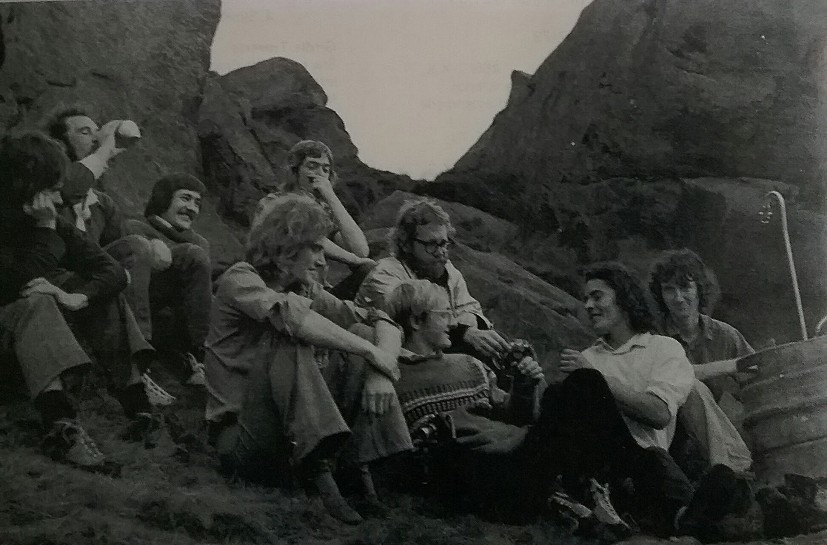
So, at some point you ended up getting a job at and moving to South Wales to embark on a career as a teacher. You'd just come down from Staffordshire and had climbed at lots of big-name areas. What was your initial impression of South Wales as a climbing area?
Um... Shit!
I thought it was awful, you know! I was used to climbing on Gogarth or Cloggy! Ogmore had a few routes (the closest crag to me), and I met up with a chap called Charlie Heard who lived there so we climbed there a lot and worked our way through them. But when I first moved here in 1971, I think Ogmore was just about starting to be developed.
So, I did quite a lot, and as time progressed - end of the 1970s I started to do some new routing at Ogmore.
I heard you had an interesting detention strategy that benefited the climbing community when you were a teacher?
It was when I started climbing with Martin Crocker a lot - Martin was always moaning about the cost of doing all these new routes. Some of my "interesting" pupils were very keen on metalwork. So, we had them learning the ins and outs of metalworking! In the construction of what we called "Specials": a flat piece of metal with a hole in. I'd give these to Martin Crocker and you find a lot of these stuck in the crags!
I've definitely clipped a few of those…
What was the scene - the community like back then?
It took a couple of visits to the South Wales Climbing Club get to know a few people and stick with them! The scene sort of revolved around Climbing Clubs. There were no mobile phones or anything - if you said, "let's go to such-and-such", there was never a chance if it rained that morning to do a last-minute call say "oh let's go to such-and-such" instead.
It's fair to say that you're known for your first ascents around these parts (South Wales). When did that start, and why? Did you run out of things to climb, was it to make a name for yourself, or was that the scene at the time?
It was nothing to do with making a name for myself. It's just, I started to climb with Gary Gibson, Martin Crocker, but I think it really started with Charlie Heard at Ogmore. Because it was so close, I got the bug for doing new routes! I could pop down at night, just a ten-minute drive to Ogmore.
One of the most memorable ones was called 'Cream Crackers'. It's on The Biscuit.
The biscuit?! What's the biscuit like?
It's kind of half-rock, half McVitie cream cracker. It's very banded and in between the bands it's eroded - so you have these breaks which make very good handholds. The edges of the horizontal breaks at Ogmore tend to be weak, especially so on the biscuit rock. Spreading the load with a palm grip or jam is more secure than bearing down on what seems like a good finger hold on the edge. It can be very friable, and it was memorable because it was so terrifying! It was pretty run-out.
Has it seen many repeats over the years?
Maybe four or five?
Since then, you've found a lot of new crags over the years in South East Wales. Many of them have been quarries. What led you to the wholesale development and cleaning of quarries? Is there anything special about these places (he smiles impishly at this question)?
No, not really! Just horrid holes in the ground, really. It's just that that's the resource in South Wales. That's our resource of rock - the old quarries.
Do you think they have any redeeming features?
Oh yes! There's lots of rock to be got at! The sandstone quarry climbing is in the main on steep small edges. Crimp power reigns but boots with good edges can ease the load on the forearms. It's well suited to those who have trained up and are transitioning outdoors from climbing walls. Most of the popular routes have shed their loose flakes and edges but on recent stuff the "snatch and grab" approach could result in grief...
I was pointed in the direction of these quarries by people like Andy Sharp, and the system in those days was that people like Andy Sharp and Martin Crocker would go the quarries and pick a nice clean wall - very steep, very technical climbing. They were interested in climbing hard routes with minimal cleaning. Classic routes like "Encore! Magnifique!" and "Mad at the Sun". They wanted hard, nice-looking, and feeling climbing that mustn't involve cleaning. And of course, I'd be with them looking around and thinking "that'd be alright… a bit of cleaning".
My forte was that I'd do the stuff that'd involve work, and they'd do the stuff that involved the technical expertise. Mine was "climbs for the people", and theirs was "climbs for the kudos".
Fair enough! So how many first ascents have you put up, in total? Do you keep track?
I try to - I use a UKC log. Some of the earlier ones I've forgotten and I need to flick through guidebooks. Fifteen-hundred perhaps? Most of those in South Wales. Up until 1986 it was mostly trad.
What was that period like - when bolting was becoming more prevalent?
Well, the first few things, stuff like 'Land of the Dinosaurs' and many other routes just had one bolt, or two. We would only place a bolt close to a really hard crux move, and the rest of the climb would either have pegs, or a wire. What we started to do was bolt them up as sport routes because nobody wanted to do routes like 'mad at the sun' with drilled pegs and one bolt. What happened in the late 80s was that we were pushing through into the E6's and E7's, a lot of routes were starting to be done with in-situ protection. I did do a lot of routes in Pembroke - that's where I first met Gary [Gibson]. Some of my first new routes were in Pembrokeshire at Stackpole, Green Bridge of Wales…
You had a long partnership with Gary and got quite a few cameos in his book. Would you say that Gary's the person who had the greatest influence on you?
Not really! We just found that we both enjoyed the 'thrill of the chase'.
What do you mean by that?
Well, we liked to find new crags - a lot of what would happen was that I'd tell him about a new crag. "There's that, there's that, there's that". Cause I couldn't do it, even back in the 90s I'd think "I'll never do that" and bring in the big guns to do them.
Was there a lot of opposition to this? What was the reaction of the community?
Well… A well-established member resigned from the South Wales Mountaineering Club because they gave me £50 to replace old bolts at the gap. I wasn't putting new bolts in; I was replacing old 8mm caving bolts on a like-for-like basis! Within a few years we lost patience and thought - if it's got a few bolts in, it's a sport climb. We did it out of our own pocket. In the late 90s we had the bolt wars, particularly down in the Gower. It led to several meetings, in the early 2000s at which we hashed out a bolting policy.
There were a couple of first ascensionists who gave us conflicting news - or views on their routes - a particular person once said, "if it's got one bolt in it, you can retro bolt it", i.e., turn it into a sport route, which we duly did. They later objected! I think that particular person's routes, I won't renew the bolts on them. If you see an E7 6c with a trad grade, with one bolt, it's still an E7! It's a route with one, rusty, old, bolt, and rusty pegs and several distressed looking threads. We decided not to get involved in ethical confusion and leave those routes alone. There are one or two first ascensionists whose routes we will not re-gear, on their express desires basically.
What was the scene like in the 90s?
It was quite busy. There were several 'teams', there was Andy Sharp, me and Gary [Gibson], Goi [Ashmore] had just moved here and was going around repeating routes, so it was a busy time. There was a bit of a buzz in the climbing scene in South Wales. People were moving on to harder sport, and trad climbing had gone into the doldrums in the late 90s. People were beginning to think not of routes with the odd bolt in, but bolted routes.
So, you've had to name around 1500 routes! Do you have a method, a muse, or another source of inspiration?
Well, sometimes someone may have already done a route there and established a theme! So, you would follow the theme. Sometimes something might have happened in your life. And sometimes you want to be playful… and cantankerous!
In the last few years there have been discussions around dated route names and changing standards of what's acceptable. Has your approach to things changed over the years?
I have heard complaints occasionally - I think it was at Rhossili. Simon Rawlinson and Adrian Berry raised a lot of money because they wanted people to develop Mermaid Wall. I did lots of 5's and 6's there, and someone actually wrote to Adrian saying "oh, don't let that Roy Thomas name any of those routes, I want to take my daughter there, and I don't want to be explaining the route names!".
I only ever changed one route name following protestation, and that was to the much more acceptable "Nip Off a Fu**king Fat Brown Turd", at Six Bells Quarry. I'm always willing to fall in with modern ways. [this name has now been further sanitised to the innocuous-sounding 'Nip Off a Turd]
I must admit that most of the route names of mine that people sometimes find objectionable, they never use foul language or expletives, so they must have worked some inferences into the names. It may not have been exactly what I was thinking!
Do you have a favourite route name of yours?
I must admit: "Don't jis on my sofa"!
That was from when a couple friends picked me up in their campervan and they were playing Frank Zappa so... A lot of it was based around Frank Zappa!
You're known for your crag restoration and sarcastic Facebook posts encouraging activism in South Wales. Was there a conscious decision that you made to become the crag fairy that we know you to be today?
I've always kind of felt a responsibility for the crags in South Wales. The Gap, for example. I used to think "this would make a fantastic crag", so I always made an effort to clean and re-gear and keep things up to scratch. It's proved to be quite a popular crag!
When I retired, I thought, well, I've got all this spare time so I may as well do something useful with it! So, I'll go out on my own and re-gear a crag or gear a crag that I've found. Other people haven't got the time, I've got the time.
I get a bit of a kick out of getting to a crag and people there are climbing routes that I've either cleaned, re-geared, or it's my first ascent.
A lot of people are climbing these days, particularly sport climbing - if these climbers wanted to similarly give something back and do something to be a steward for these crags, what kind of advice would you give them?
Well - don't top-rope through the anchors! Have a brush, something like that, carry a spanner in your bag to tighten the nuts. Don't strip rare ferns and mosses… but grass and brambles are easily removed. If you're a sport climber you won't have a nut key but all my first new routes were all cleaned with one! Try donating to your local bolt fund!
Personally I'm 72 so I can't keep going out to replace bolts so at some point someone else has got to do it - come along and learn how to do it.
Have you ever had any near-death experiences?
Several! One of the first was in the early 70s. There was a young lad from Stoke called John Yates. We did Mousetrap at Gogarth. John was sat on a block at the top of a ramp with a couple of pegs knocked behind it. I started up the last pitch, which was a chimney. As I passed him, I said to John "there's a thread here, John!" so we put the thread just above the block, and I strapped him into that as a backup. As I was twitching up the chimney I heard a startled screech, and the whole block at the top of the ramp had slid forward (the pegs were no use), and John was left hanging with his heels thrashing off the thread! The rock then dropped onto the rope and chopped it in several places. The whole place was full of a sulphurous smell as the block, as big as this table, disintegrated into a thousand pieces!
I said "John, check the rope!" and he had to put several knots in it. I had to do the last pitch with one rope that was chewed half through and another with half a dozen knots in it.
You've been involved in quite a few guidebooks over the years. What have you seen to be the differences in what makes a guidebook over the years? What do you get out of writing a guidebook?
The major changes have been of course have been the topos. The emphasis back in the day was in the descriptions, but I think as we've moved on to more and more sport climbs, you don't need as much of a description, because if there's 15 routes on a crag and 15 lines of bolts, you'd have to be pretty stupid not to work out which is which. I think people expect that kind of thing on trad routes now too. It can be quite awkward if it's a sea cliff! Quite often if the tide's in, and, say, Ogmore, if you want to find such-and-such route and you're abseiling in… You can't go past in a canoe first to have a look!
My role with the guidebooks was always just that I knew the crags. I could draw lines on a topo roughly, a proto-topo, and then I have a good friend called Tim Hoddy who would make them presentable.
You're still putting up sport routes at around 6c and trad, too. How do you keep the fire burning? Do you have a specialist training plan, skincare routine?
I think 6c is probably the highlight! Most of them are 5's these days! Draught Bass is quite good - wonderful recuperation powers. Merlot is quite good too! I don't train, apart from jumaring. I don't go to climbing walls, but I go to Spain in the winter to keep things ticking over. I have very low aspirations, I just go to enjoy myself. I don't go to climbing walls, I always hurt myself. I stay on the game by going out in the winter and finding new crags (if there are any), new routes, clean them, get them ready, and then come spring, come summer, it's like a larder. I've got a little store of stuff that's already prepared to tick away at. And the actual humping up a hill with a rucksack, jumaring up and down in the cold is enough to keep me fairly fit!
About 10-15 years ago I could perhaps do 7a's, but as the years go on, I struggle a little more. Especially with crimpy stuff. I'll have to redpoint a 6c now, definitely.
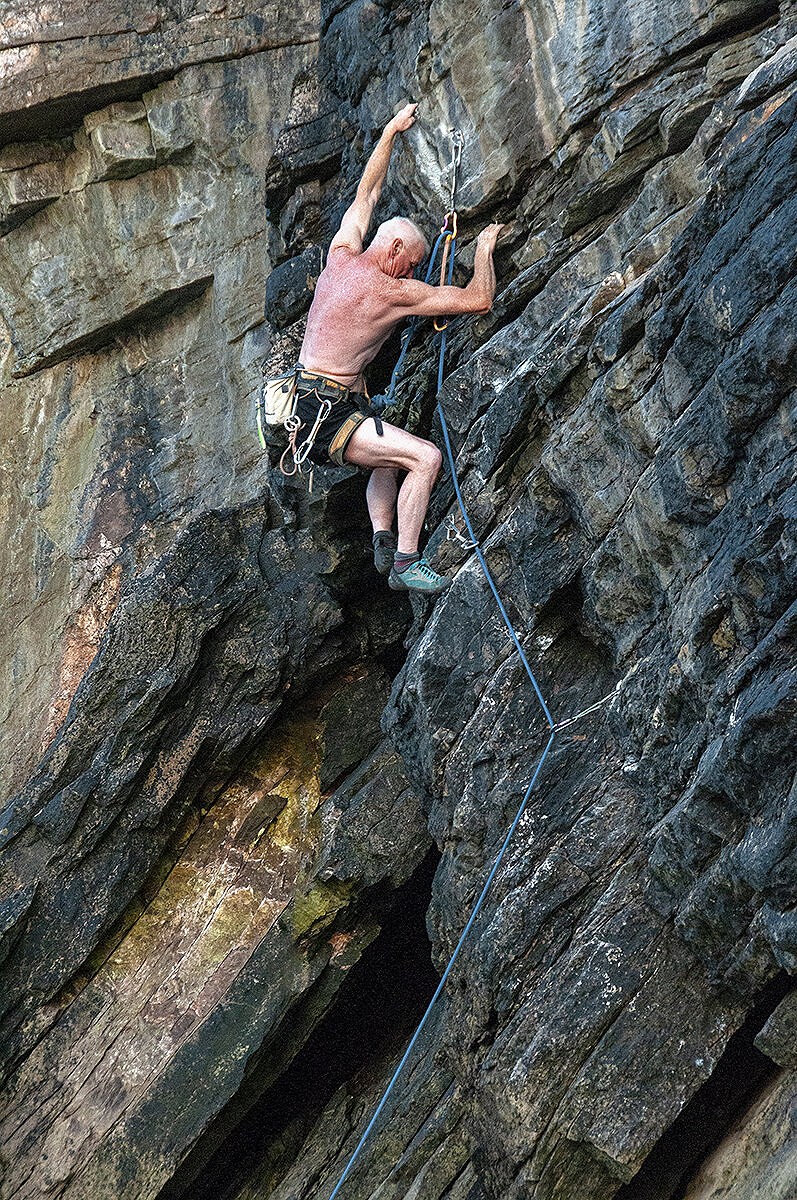
You've no plans for slowing down?
Well - I have slowed down, haha! When I got to my early 60s, I decided that I wanted to keep doing it for another ten or so years so I dropped it down a peg or two as far as trying hard routes. I'm not particularly interested in hurting myself attempting to top-rope someone else's 6c but if I've spent a day bolting it, I have more motivation to climb it.
I've found that perseverance and persistence work wonders. I've often gone to something, bolted it, had a go, and thought "I'm never ever going to do this" but it may take a year, it may take five or six, but I usually find that in the end I can keep it all together and do it!
You know the climbing in South East Wales as well as anybody and you've done your fair share of climbing elsewhere. How would you say that South East Wales compares these days with other areas such as Avon and Cheddar, the Peak, Swanage, etc.
What we've got here in South Wales is variety. Some of the areas are really good, and some of them are alright if you're local. There are one or two areas that are as good as anywhere in the rest of the UK. I think, Ogmore, if you're a trad climber. Witches point.
I think the one sad thing is that Pant Quarry was one of the best sport climbing areas in the UK, but sadly that's been lost. If you were saying "where's the place that's as good as anywhere else in the UK", that was Pant Quarry. Pendine is also good (a little further West)!
Last question - what would you like to think of as your legacy in climbing.
Oh! I would think that if you look at UKC logbooks and see what most people climb. Below 6b+ or 6c, an awful lot of people, 80% of their routes have been put up by me!
Like today, tidying up at the crag. Why would any sane person go out in the snow and rain and renew old rusty bolts? If I walk by in the summer and see loads of people there in the summer enjoying themselves, that's payback.
- OPINION: Right to Roam - An Idea Whose Time Has Come 27 Feb
- DESTINATION GUIDE: Tywodfaen De Cymru 26 Oct, 2022
- DESTINATION GUIDE: South Wales Sandstone 26 Oct, 2022
- DESTINATION GUIDE: Welsh Crack Climbs 16 Dec, 2021

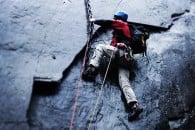

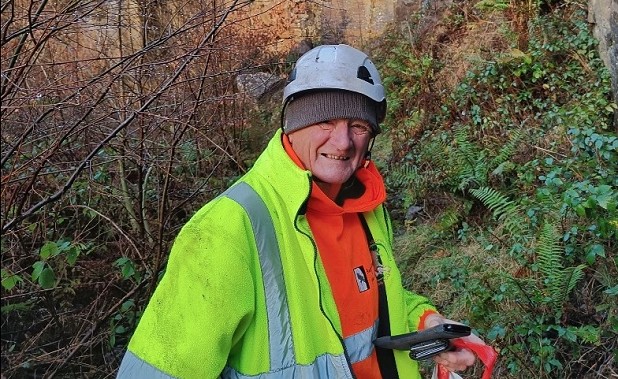
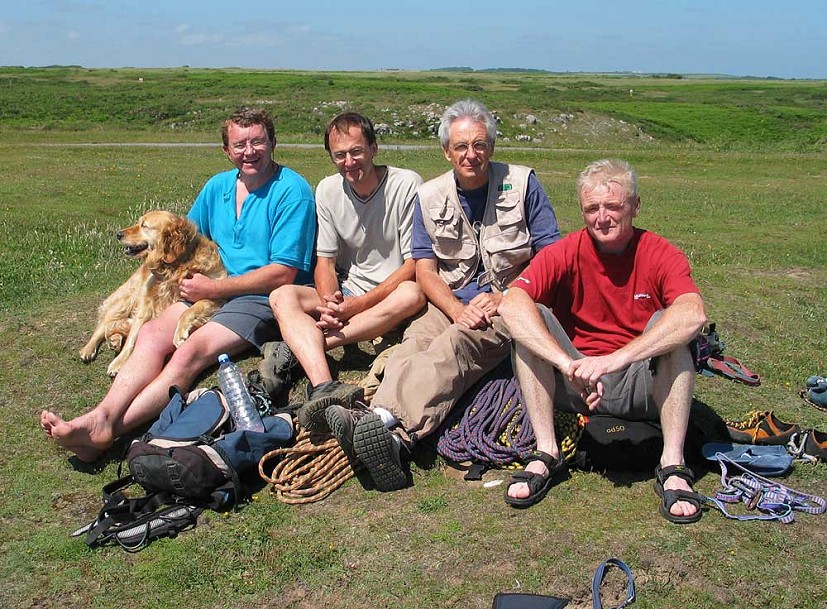
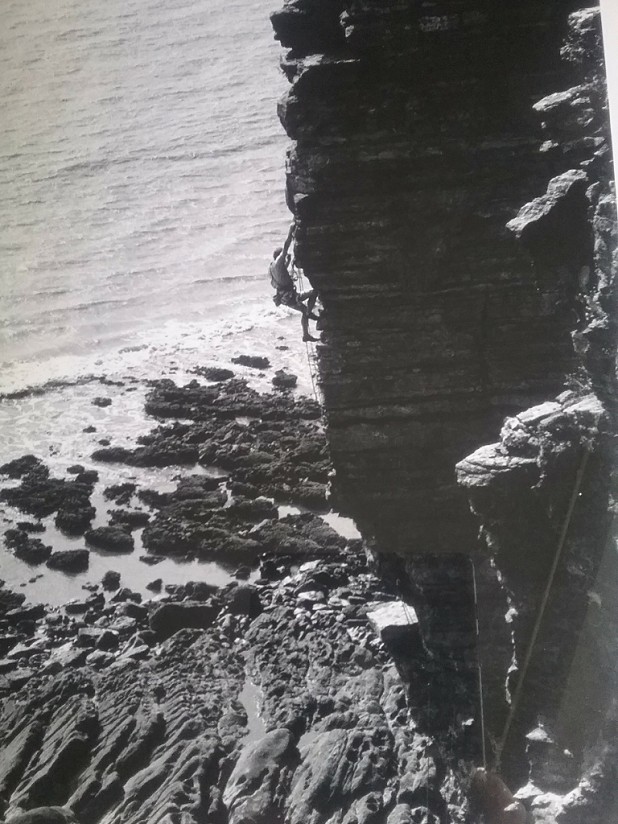

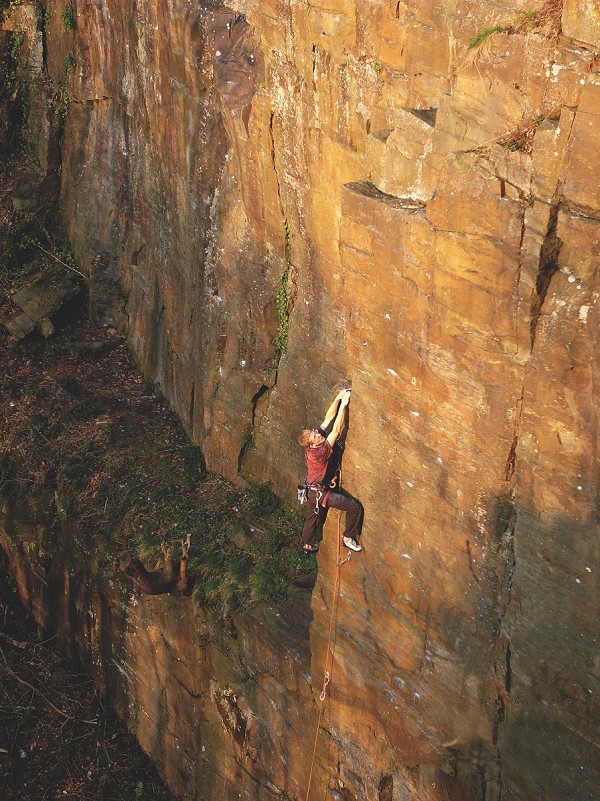
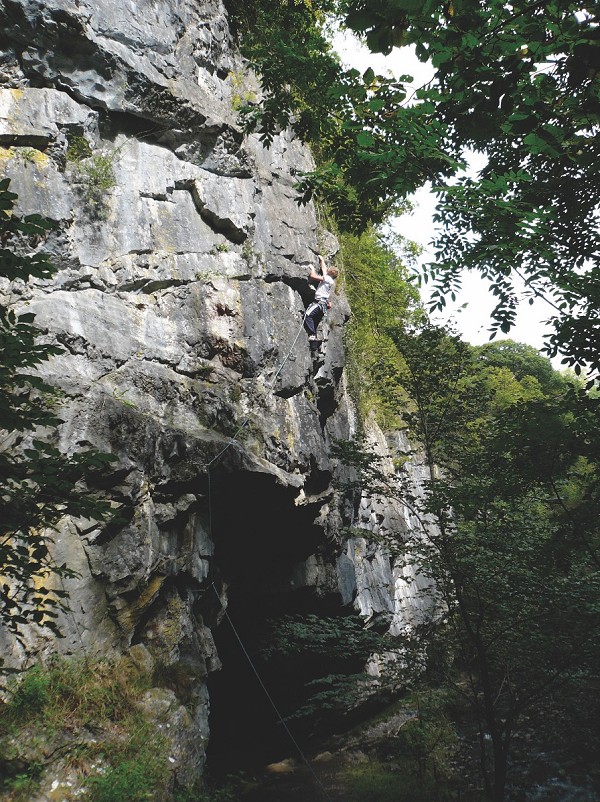

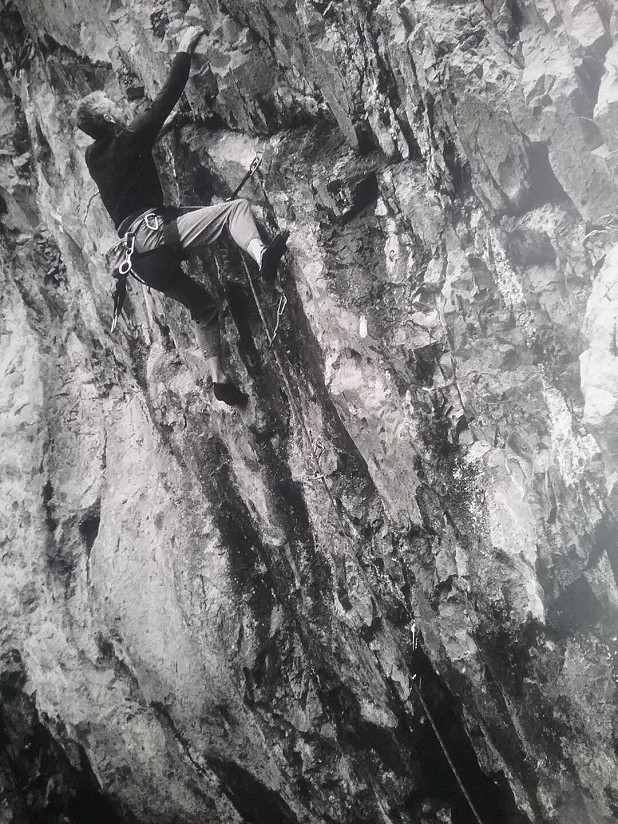
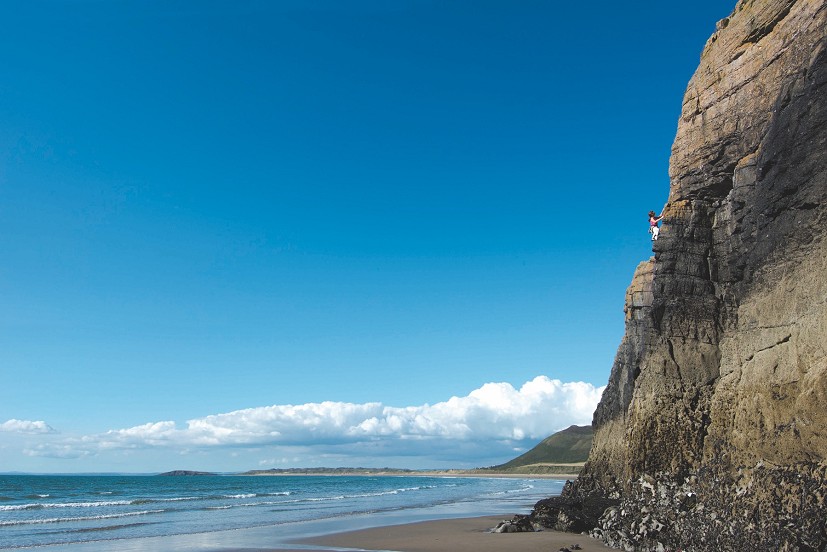
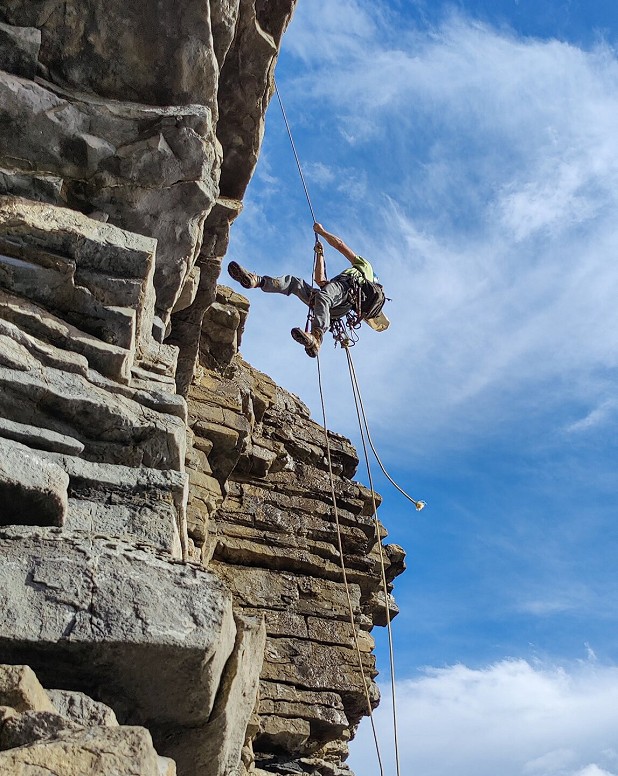
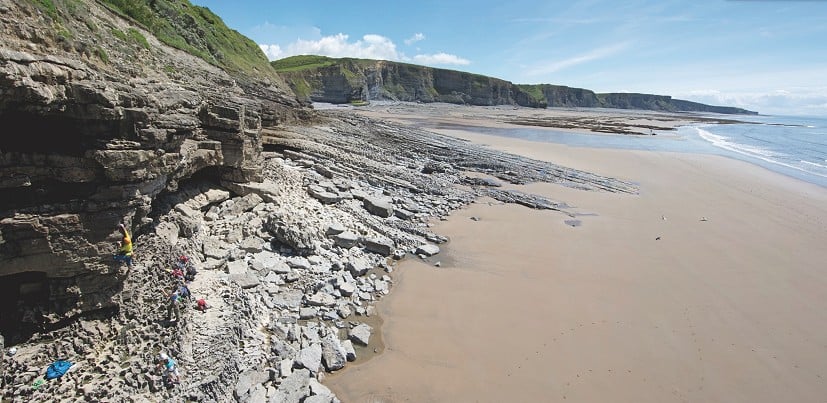

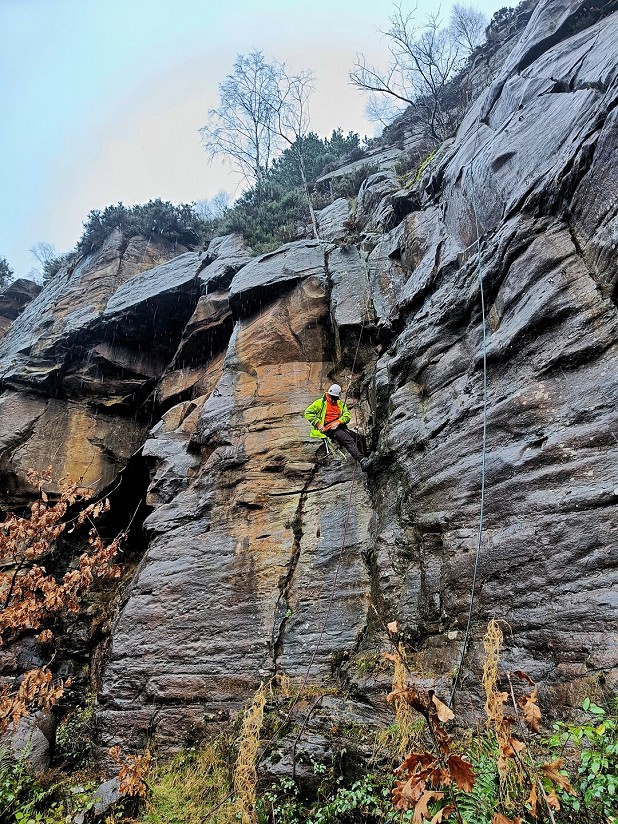
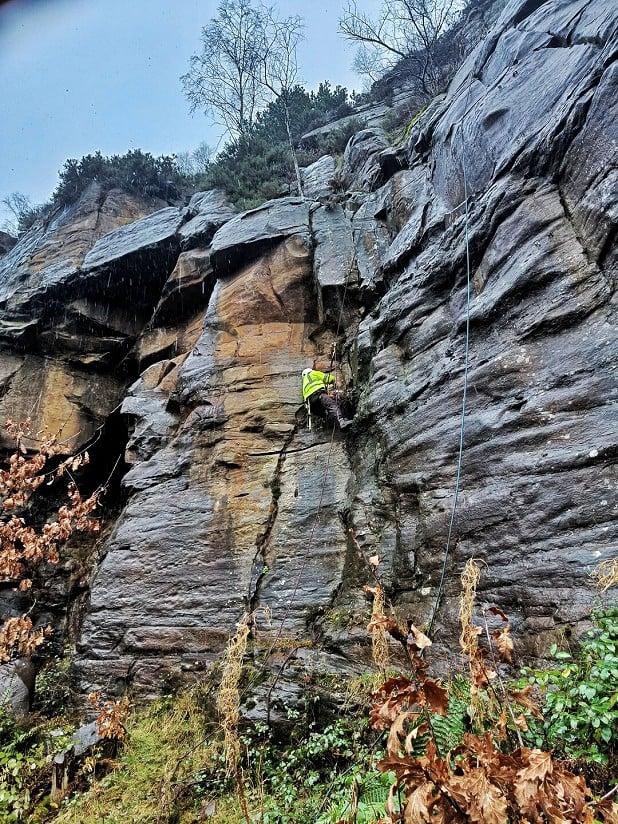
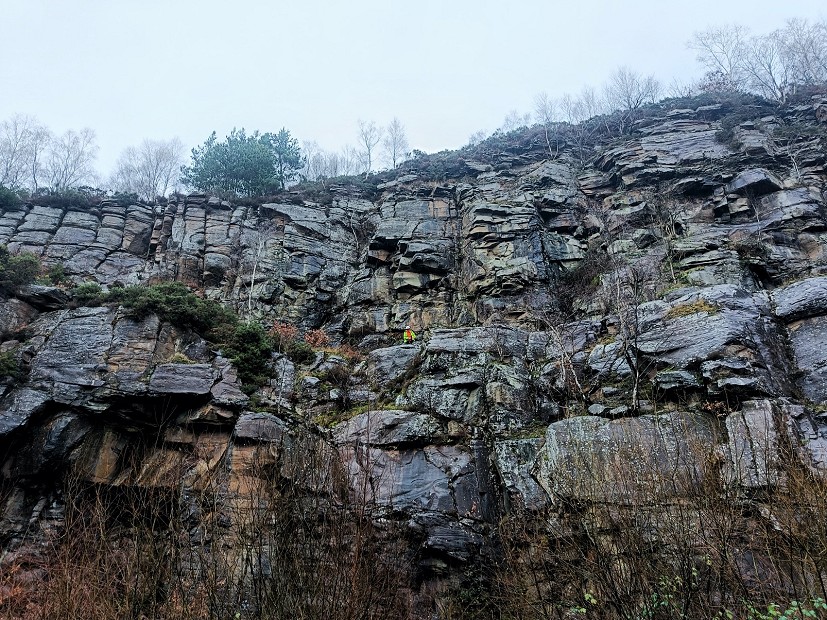

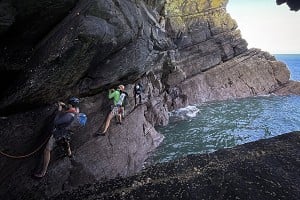







Comments
I went to uni in swansea (met) and left a few years ago (2019) and bumped into Roy a few times and some of my climbing partners had a lot of dealings with Roy - a really nice bloke.
loads of great routes something that always amazed me was how frequent new routes were popping up. There would be more new routes then you could climb!
it’s brilliant- love it.
get on Roy!
A very good interview, it’s great to see Roy getting some kudos for his many achievements and for all his hard work.
Keep up the good work Roy.
Chris
Totally agree. An excellent interview with a notable subject. I've long regarded Roy Thomas as a legendary figure.
There are always people, often under the radar, quietly working away, giving back to climbing. Largely unsung heroes.
They're worthy of recognition in their own right. And if highlighting their efforts inspires others to come forward... well, as an old climbing mate of mine used to say, "It's all good!"
Mick
Great interview, cool to get an insight into someone whos had such an impact on SE Wales climbing
Super bloke, determined, dogged, supportive, he deserves recognition for how he has brought the area into one worthy of visiting, I think the BMC and the climbing community owe him a massive thanks, perhaps an award?